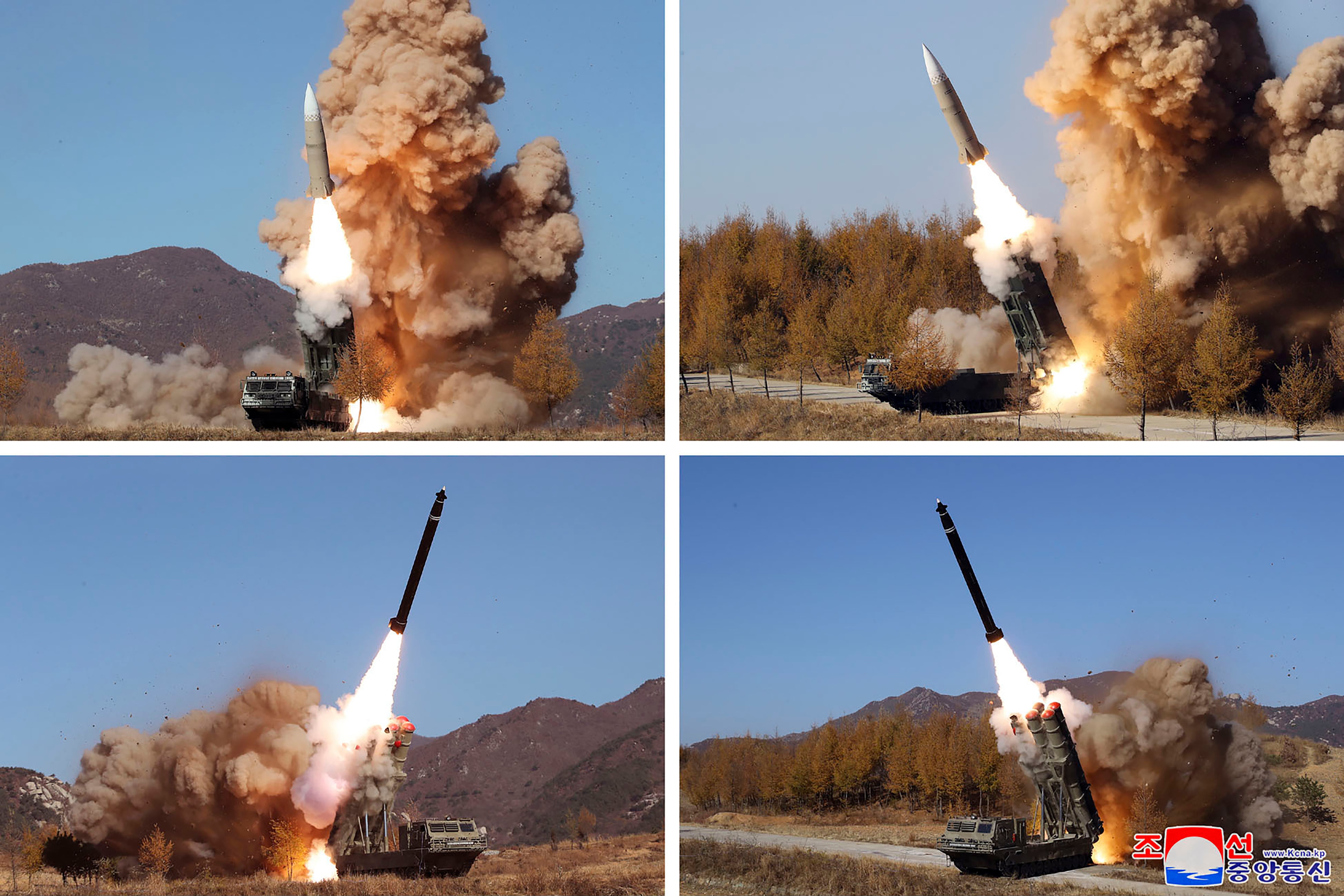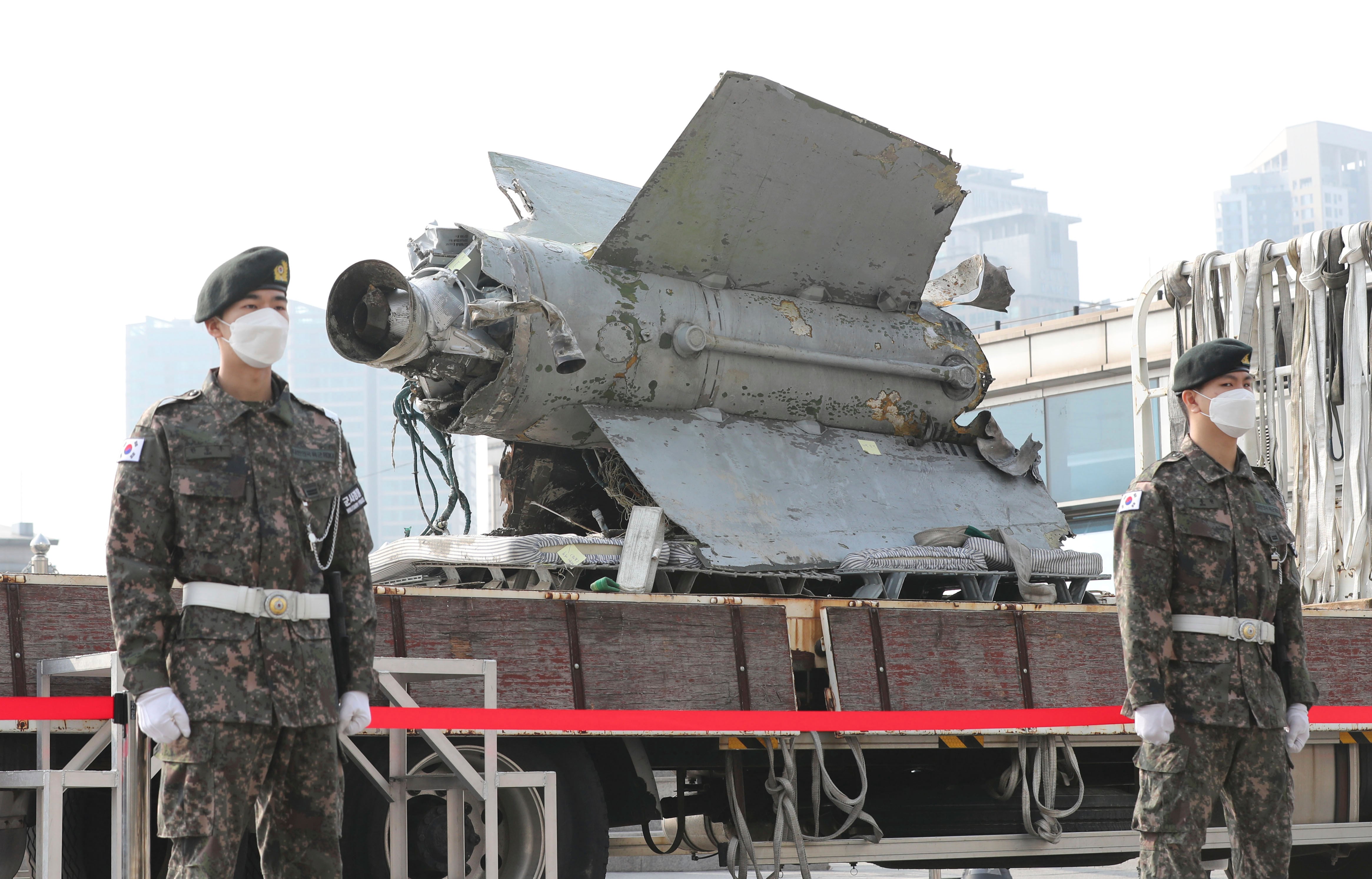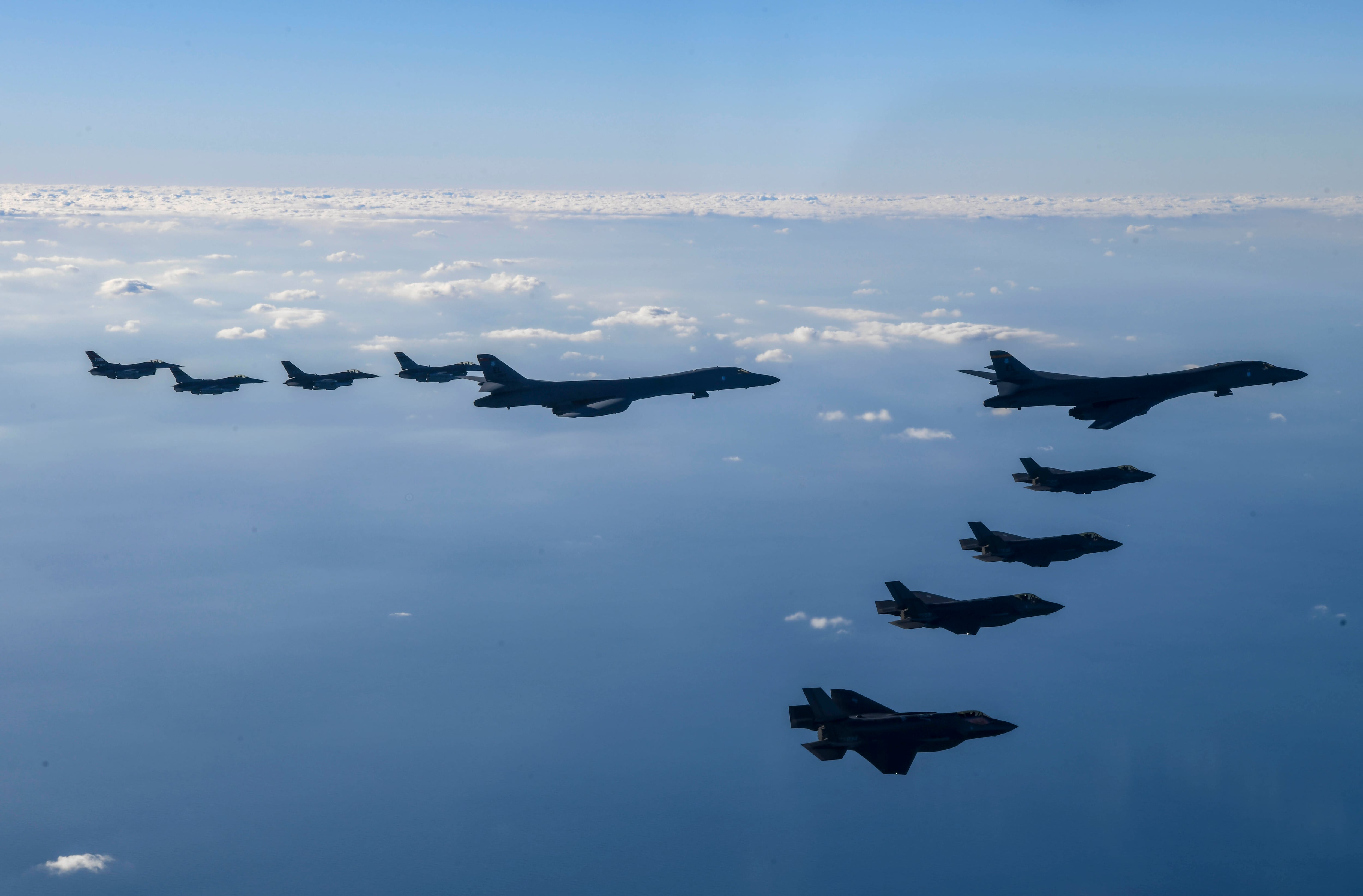SEOUL, South Korea — North Korea fired a short-range ballistic missile toward its eastern sea on Wednesday, extending a recent barrage of weapons demonstrations including what it described as simulated attacks on South Korean and U.S. targets last week.
Seoul’s Joint Chiefs of Staff said the missile was launched from the western town of Sukchon, north of the capital, Pyongyang, and flew across the country toward waters off the North’s eastern coast.
RELATED

The South Korean and Japanese militaries assessed that the missile flew about 250 to 290 kilometers (155 to 180 miles) at a maximum altitude of 30 to 50 kilometers (18 to 30 miles). The relatively low trajectory seemed to align with the flight characteristics of some of North Korea’s newer short-range weapons designed to evade missile defenses.
Japanese Defense Minister Yasukazu Hamada said the missile landed in waters outside of the country’s exclusive economic zone. He said North Korea’s intensifying testing activity was “significantly heightening” regional tensions and that Japan lodged a protest with the North through their embassies in Beijing.
South Korea’s Foreign Ministry said its nuclear envoy, Kim Gunn, held separate telephone calls with his U.S. and Japanese counterparts to discuss trilateral cooperation to counter North Korea’s increasing weapons tests and growing nuclear threat. South Korean officials say the North could attempt to further raise pressure by conducting its first nuclear test since 2017 in coming weeks.
The launch came after North Korea fired dozens of missiles last week in an angry reaction to a massive combined aerial exercise between the United States and South Korea that the North described as an invasion rehearsal.
Earlier Wednesday, South Korea’s military said the recovered debris of one of the North Korean missiles that flew southward last week was determined to be a Soviet-era anti-aircraft weapon that dates back to the 1960s.

The North’s military said on Monday that its launches last week were simulations to “mercilessly” strike key South Korean and U.S. targets such as air bases and operation command systems.
It said those tests included ballistic missiles loaded with dispersion warheads and underground infiltration warheads meant to launch strikes on enemy air bases, ground-to-air missiles designed to “annihilate” enemy aircraft at different altitudes and distances, and strategic cruise missiles that fell off South Korea’s southeastern coast.
The North described those launches as an appropriate response to the United States and South Korea’s “Vigilant Storm” joint air force drills that wrapped up Saturday, which involved some 240 warplanes, including B-1B supersonic bombers and advanced F-35 fighter jets.
RELATED

This week, South Korea’s military has been conducting annual command post exercises meant to enhance crisis management and operational capabilities to cope with growing North Korean threats. The four-day training is to last until Thursday.
Wednesday’s launch also came as vote counting in the U.S. midterm elections was underway. Some experts earlier said the results of the U.S. elections would not likely change the Biden administration’s policies on North Korea.
South Korea’s Defense Ministry said Wednesday that an analysis of a 3-meter (9.8 foot)-long piece of wreckage fetched from waters near the Koreas’ eastern sea boundary on Sunday showed it was one of North Korea’s SA-5 surface-to-air missiles. The ministry said a similar missile was used by the Russian military to execute ground attacks during its invasion of Ukraine.
Photos released by the South Korean military show what appears to be a mangled rocket engine and wires sticking out from a broken rocket body that is still attached with fins.
The missile, which was one of more than 20 missiles North Korea fired last Wednesday, flew in the direction of a populated South Korean island and landed near the rivals’ tense sea border, triggering air raid sirens and forcing residents on Ulleung island to evacuate.
The South Korean Defense Ministry said it “strongly” condemns the North Korea’s firing of the SA-5, which it sees as a violation of a 2018 inter-Korean military agreement on reducing tensions.
The dozens of missiles North Korea fired last week also included an intercontinental ballistic missile that triggered evacuation warnings and halted trains in northern Japan.
Some experts say it’s possible that North Korea reached into the inventory of some of its older weapons to support the expanded scale of last week’s launches.
The launches added to North Korea’s record pace in weapons testing this year as leader Kim Jong Un exploits the distraction created by Russia’s war on Ukraine to accelerate arms development and ramp up pressure on the United States and its regional allies.
“The North Koreans would want to display their range of missile technologies through these tests, but not all launches have to reveal the latest technological advancements,” said Soo Kim, a security analyst from California-based RAND Corporation.
“It may be in North Korea’s interest to hold some of its modern capabilities in reserve and test them at opportune occasions. Kim, again, is playing a longer game, so to reveal all of his cards – the different types of missiles and capabilities his country has acquired – would not work to his favor,” she said.
Nuclear talks between Washington and Pyongyang have stalled since 2019 over disagreements in exchanging the release of U.S.-led sanctions against the North and the North’s disarmament steps. North Korea has so far rejected U.S. offers of open-ended talks, insisting that Washington must abandon its “hostile” policy first, a term the North mainly uses to refer to sanctions and U.S.-South Korea military drills.
The North has also aligned with Russia over the war in Ukraine while also blaming the United States for the crisis, saying that the West’s “hegemonic policy” has forced Russia to take military action to protect its security interests. However, the North has denied U.S. assessments that it has been sending large supplies of artillery shells and other ammunition to Russia to support the war efforts.
“We regard such moves of the U.S. as part of its hostile attempt to tarnish the image of [North Korea] in the international arena,” an unidentified vice director at the ministry’s military foreign affairs office said in a statement carried by state media on Monday.
AP writer Mari Yamaguchi contributed to the report from Tokyo.



